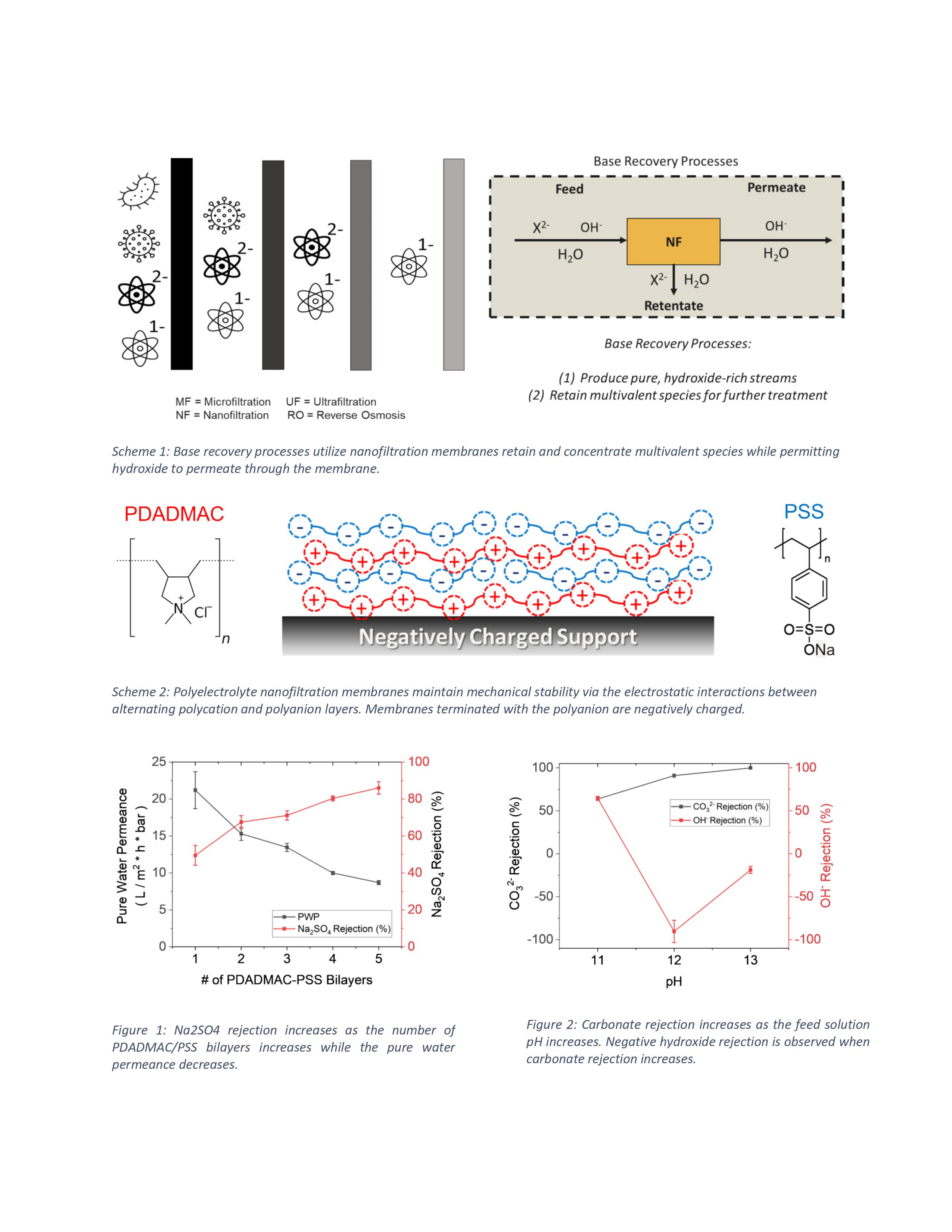Climate change and overconsumption threaten the availability of potable water, non-renewable minerals (phosphorous, nitrogen, etc.), and valuable metals (lithium, copper, rare earth minerals). Nanofiltration (NF) membranes address these challenges by enabling monovalent/divalent species separation with unrivaled precision. Base recovery processes have emerged as essential tools in resource recovery, targeting the removal of multivalent species from hydroxide-rich streams. Most notably, there is growing demand for membranes capable of separating CO
32- from hydroxide-rich CO
2Â capture solvents and PO
43- from hydroxide-rich adsorbent regeneration solvents. The conventional NF membraneâs polyamide active layer degrades following long-term exposure to alkaline conditions. In this study, we fabricate alkaline-resistant polyelectrolyte membranes by depositing alternating layers of polycation (poly(diallyl dimethylammonium chloride)) (PDADMAC) and polyanion poly(sodium 4-styrenesulfonate) (PSS). The PDADMAC/PSS bilayer is held together via electrostatic interactions that are maintained at extreme pH conditions. We demonstrate their promise for base recovery applications by testing CO
32-/OH
â and PO
43-/OH
â separation performance. The alkaline stability of polyelectrolyte and polyamide membranes is evaluated by exposing membranes to pH 13 KOH solutions, then testing performance periodically over four weeks. CO
32- and PO
43- rejection increase as the number of polyelectrolyte bilayers increases; five PDADMAC/PSS bilayers remove >99% of CO
32- while allowing complete passage of
-OH at pH 13. Commercial polyamide NF membranes degrade rapidly following long-term exposure to alkaline conditions, but polyelectrolyte membranes maintain long-term performance. Ultimately, PDADMAC/PSS polyelectrolyte membranes purify
-OH-rich streams, retain multivalent species for further treatments, and show superior alkaline resistance to polyamide membranes.


